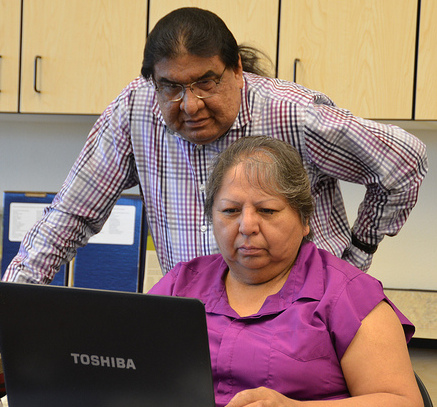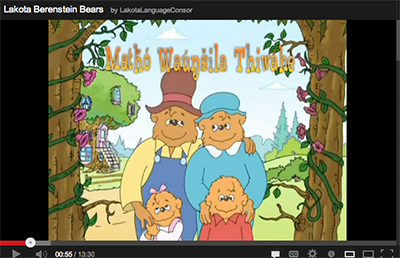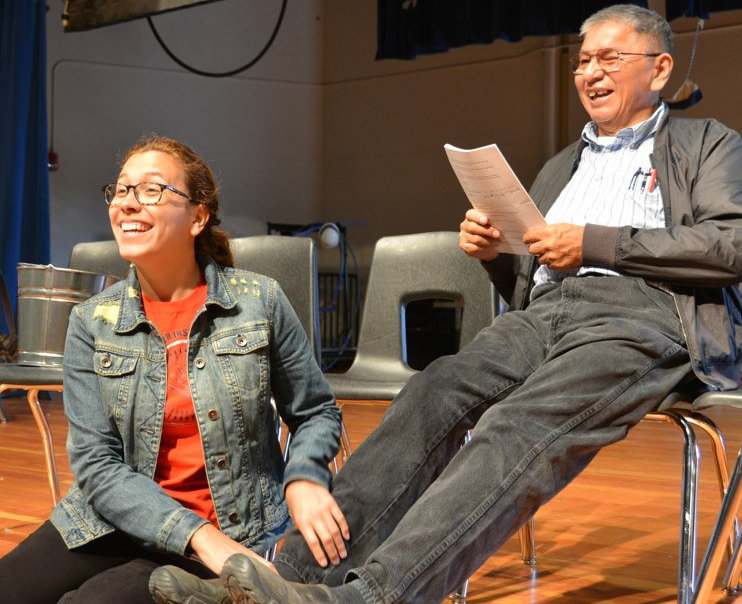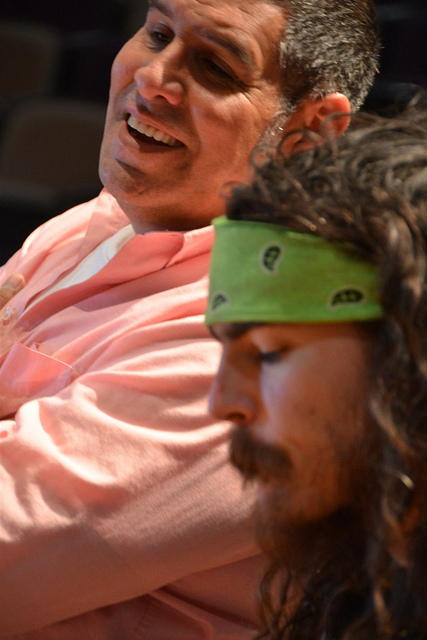
A Lakota-Dakota-speaking Berenstain Bears cartoon is the kid magnet at the new Innovation Gallery at the State Historical Society of North Dakota. The Gallery is one of four new galleries built in the Society’s newly expanded Heritage Center educational museum space.
You can see that children hear the language on the telephone handsets while seeing the animated cartoon action and reading the English translation off to the side. The cartoon is “Homework Hassle,” dubbed into Lakota-Dakota for the 2011 PBS series Matȟó Waúŋšila Thiwáhe, produced by the Lakota Language Consortium as part of their mission to promote the language to the wider public.
Chris Johnson, Museum Division Director at the Society, told us how the cartoon — and the region’s many indigenous languages – all fit into the Innovation Gallery’s educational intent.
“When we were designing this exhibit, we went out to the five reservations in North Dakota, and talked with people about what we hoped to do in the gallery,” Johnson said. The two galleries now open – Adaptation and Innovation – look at two different stages of North Dakota history: Adaptation is pre-human, ie. dinosaur fossils and geologic record until the end of the last Ice Age 13,000 years ago, and Innovation shows the development of human societies from the end of the Ice Age until 1860.
“We took public feedback and had a team of advisors from each reservation,” Johnson said. “What came back in comments was the importance of presenting the tribal language – whether in New Town, Spirit Lake, Standing Rock, or wherever, it was a universal comment. So we made sure we worked languages in wherever we could.”
The Innovation Gallery exhibit incorporates Plains sign language as intertribal communications, and winter counts to show how the Plains peoples recorded their long-term history. However, Johnson says, the exhibit designers also wanted to talk about “how contemporary tribes today are working to either preserve or revive languages, and how for a language to be viable is it has to be current, relevant to today’s world. So we thought the Lakota Berenstain Bears cartoon would show how to take a language some would think was from the past, and make it relevant today.”

Johnson contacted LLC for permission to use the cartoon. How could we say no?
Johnson admitted that the Society sought an easy way to get past the closeness of “Lakota” and “Dakota” languages – so they just used “Dakota” as a universal term for the tribes speaking those related tongues.

There are other uses of regional languages significant to the Innovation Gallery. Each section of the Gallery has a panel to introduce the section’s theme with a quote from one of the languages, printed in English but with a push-button audio option that lets the visitor hear the quote spoken in that language. The section on the history of horses in the Plains region is introduced in Lakota.
















